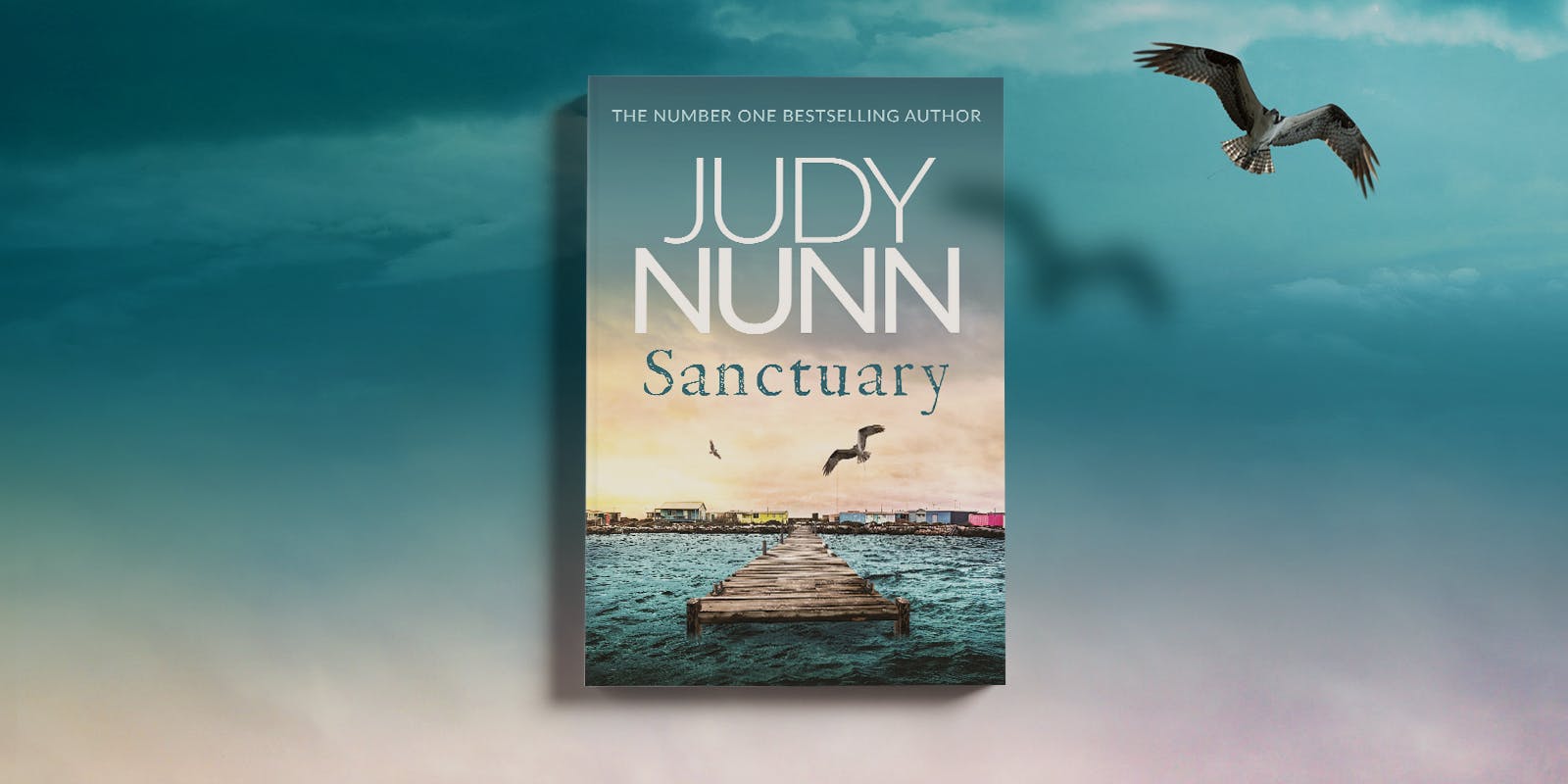Judy Nunn offers insights into the creation of her book Sanctuary.
Tell us about Sanctuary?
Sanctuary tells the story of nine refugees fleeing from war-torn countries. They’re of differing nationality, culture and religion, and they’re strangers to each other when they board a boat in Indonesia. However, when the vessel founders in a storm and these nine are the only survivors they are forced to bond in order to survive.
What sparked the beginnings of this story?
My husband, Bruce, and I were guests at ‘the Big Sky Writers Festival’ in Geraldton, a city on the coast of Western Australia. Along with several other writers attending the festival we were invited to take a trip out to the Houtman Abrolhos, a chain of islands with a treacherous past of shipwrecks and mayhem. I’ve always been fascinated by the Abrolhos – so much so in fact that they’ve featured in two of my past books – Territory and Floodtide. I’d researched the archipelago a great deal over the years and had flown out to the islands previously, but never had I experienced the thrill of staying overnight. I can promise you, being marooned out there on a bleak and desolated island with a bunch of highly creative people was inspirational. We all agreed ‘what a great backdrop for a novel’, but it was only a number of years later I decided to incorporate the setting the way I have in Sanctuary.
For Spirits of the Ghan you travelled the Ghan railway to get a feel for the territory and landscapes. How did you conjure the environment of Gevaar Island? What types of research was involved?
Gevaar Island is fictional, although geographically based upon Big Rat Island, one of the 122 islands that make up the Houtman Abrolhos. The name ‘Abrolhos’ is actually an old Portuguese seafaring term that means ‘look out’ or ‘keep your eyes open’, referring to the treacherous reefs that surround these low-slung coral islands. I chose the name ‘Gevaar’, which means ‘danger’ in Dutch, as the early sea merchants travelling these waters were for the most part Dutch.
My brother and his family live in Geraldton and I’ve visited this part of the world many times, so it was not difficult to conjure up the terrain. And during the creation of the book I’ve found it incredibly handy having Rob, his wife Dee, and my niece Cory always available for local research queries. I also had invaluable assistance from a beaut bloke at the Geraldton department of fisheries.
Tell us about the challenges associated with writing such a diverse ensemble of characters?
Writing a cast of diverse characters is always challenging. To me that’s the thrill of writing – creating the people who inhabit my book, the people who indeed take over and can even challenge the direction the book takes. This particular ensemble is certainly diverse, varying as they are in nationality, culture and religion, but one of the main points I wish to make is the fact that they are, above all, people.
Each individual’s story starts out differently, but all lead to people smuggler Benny Hitono. How did you go about creating the harrowing and diverse backstories of your marooned, international cast?
Writing backstories such as these set in war zones has always been a harrowing experience for me. I’ve done it many times in the past. The trenches of Gallipoli and the western front of WW1 feature in Kal, Tiger Men and Beneath the Southern Cross. The battlefields and war-torn cities of WW11 feature in Heritage and Pacific. The jungles of Vietnam feature in Floodtide and Elianne.
In turning this time to the beleaguered cities of the Middle East I needed to explore and research another whole set of circumstances and areas of conflict. Once again this was harrowing and at times shocking, but also for a writer, inspirational. The fact that my characters have experienced such conflict allows me greater licence to create them.
Which of the characters would you choose to join you on a deserted island (and why)?
I would choose Hala. She’s emotionally strong, immensely practical, being a highly-trained nurse, and above all she gives one hope. Hala is the person to turn to when things look bleak. It helps also that she has a clearly-defined sense of humour.
Did any of the characters stay with you after you’d finished writing the book and if so, who?
All of the characters stayed with me after I’d finished writing the book – all of the refugee characters that is. Even though some featured in more detail than others, the background of each and the creation of each remained very strongly in my mind. They still do.
You’ve said that ‘I always like to have a moral core to the book. That helps inspire me.’ What would you say is the moral core of Sanctuary?
I would say this book is about the human spirit; the will to survive under horrendous circumstances and the spirit of those who put themselves at risk to help others in peril. In other words, it’s about humanity.
Your books deal with various periods of Australian history: why is this book set in the current day?
The book is set in the current day because it has to be. I’m writing about a current situation. We are living history after all. What’s happening today is always tomorrow’s history.
What have you learned through the creation of this book?
I’ve learnt a lot about humanity. But I’ve also learnt a lot about inhumanity. Mankind is a pretty vicious species. We do things no other animal would do to its own.














